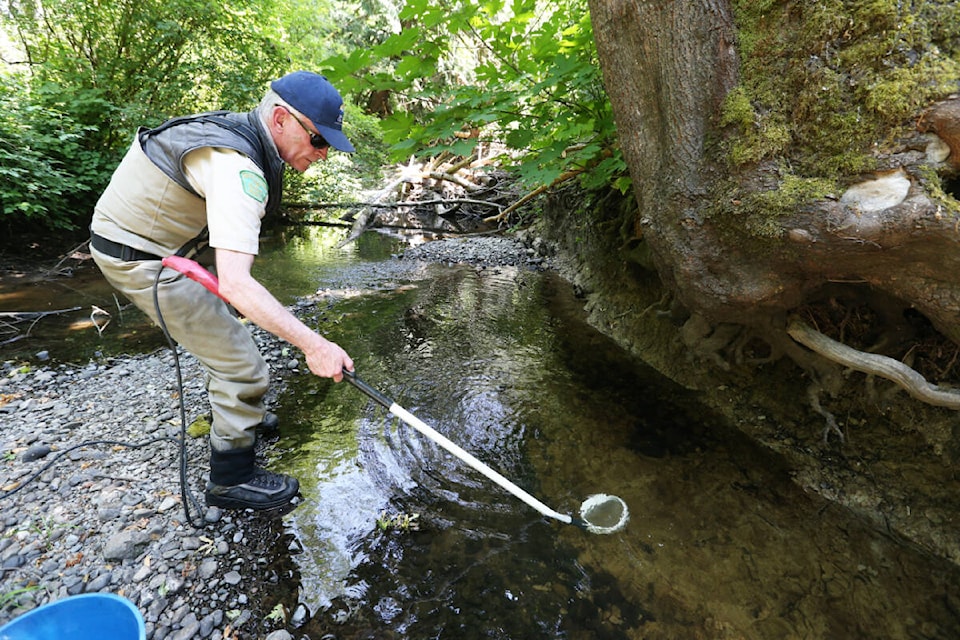The Bilston Watershed Habitat Protection Association and a provincial biologist were out on the watershed Wednesday (July 5) in the hopes of answering a long-standing question about if the resident coastal cutthroat trout population a genetically unique subspecies.
It’s a question pondered by biologists and watershed stewards for years given its isolation from other watersheds in the area, and the fact the population has never been stocked by humans.
Now, thanks to a day of tests and samples including genetic testing on the fish, that answer should soon arrive.
By answering that question, the hope is attention will be drawn to the important ecosystem and fish species facing a serious population decline.
“We just want to show people what’s here because so many people look at the creeks and think it’s just a ditch, but it’s really a part of the watershed, and it has coastal cutthroat trout,” said association president Alison Leduc. “We’ll also be able to compare information we are getting now with historic information. Today it’s about population and genetic sampling.”
Leduc said answering that genetic question could also spark further scientific study on the biodiversity of the ecosystem, which could provide clues about temperature or virus tolerance among the fish.
The testing, which took place at multiple sites around the watershed, is also looking at water levels, flow levels, plant life and more to help guide the association’s restoration work moving forward.
“I last visited this watershed something like three decades ago, so it’s just a reaffirmation this is a fish-bearing system, it still has huge potential for fishery – it really depends on how we treat the headwaters,” said Ron Ptolemy, rivers biologist with the Ministry of Water, Land and Resource Stewardship. “We’re getting a ballpark estimate of whether the population is high or low. It’s important in this case because we are also profiling the DNA structure of the population, and how it compares to other sampled populations on the island and elsewhere in the Pacific North West. We are actually doing this in cooperation with the state of Washington … it’s good science.”
READ MORE: West Shore Mountie prepares for Tour de Rock challenge



